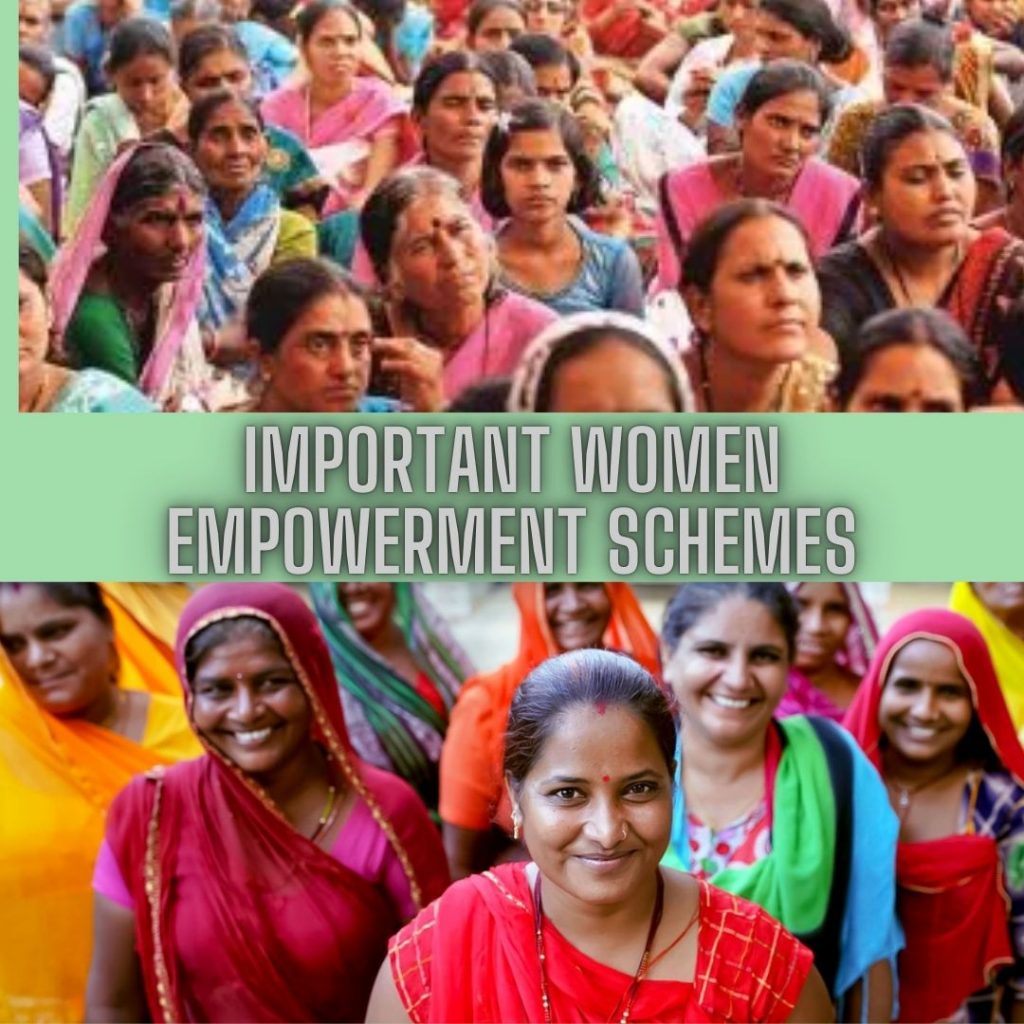Empowering women has been a key focus of the Indian government for decades, recognizing that gender equality is essential for the overall development of the nation. To address the various social, economic, and educational challenges faced by women, the government has launched numerous schemes aimed at improving their status and providing opportunities for growth and empowerment.

Here is a comprehensive list of key women empowerment schemes in India:
1. Beti Bachao Beti Padhao (BBBP)
Launched: January 2015
Objective: To address the declining child sex ratio and promote the survival, protection, and education of the girl child. The scheme aims to prevent gender-biased sex selection, ensure the education of girls, and promote their overall well-being.
Key Features:
- Multi-sectoral approach involving ministries of Women and Child Development, Health, and Education.
- Focus on changing societal attitudes and mindsets towards the girl child.
Important Monuments of India
2. Pradhan Mantri Matru Vandana Yojana (PMMVY)
Launched: January 2017
Objective: To provide financial support to pregnant and lactating women to improve their health and nutrition, thereby reducing maternal and infant mortality rates. The scheme provides a cash incentive of ₹5,000 in three installments for the first live birth.
Key Features:
- Targeted at women aged 19 years and above.
- Encourages women to seek healthcare and nutrition during pregnancy.
3. Mahila E-Haat
Launched: March 2016
Objective: To promote women’s entrepreneurship by providing an online platform where women can showcase and sell their products. This initiative is part of the government’s broader Digital India campaign.
Key Features:
- Direct market access for women entrepreneurs.
- Simple, easy-to-use, and cost-effective platform for women to promote their businesses.
4. Sukanya Samriddhi Yojana (SSY)
Launched: January 2015
Objective: To encourage parents to save for the education and marriage of their girl child. This small savings scheme offers a higher interest rate than other savings accounts, with tax benefits under Section 80C of the Income Tax Act.
Key Features:
- Account can be opened in the name of a girl child until she turns 10.
- Interest earned is tax-free, with a maturity period of 21 years or until the girl marries after 18 years.
5. One Stop Centre Scheme (Sakhi)
Launched: April 2015
Objective: To support women affected by violence, both in private and public spaces, within the family, community, and at the workplace. The scheme aims to provide integrated services such as police assistance, medical aid, legal aid, and counseling under one roof.
Key Features:
- Establishment of One Stop Centres (OSCs) in various states.
- 24/7 emergency response services for women in distress.

6. Ujjwala Scheme
Launched: May 2016
Objective: To provide clean cooking fuel to women below the poverty line (BPL), reducing the health hazards associated with cooking on traditional fuels like wood and coal. The scheme aims to empower women by improving their health and providing them with the dignity of clean energy.
Key Features:
- Free LPG connections to eligible women from BPL households.
- Financial assistance of ₹1,600 for each LPG connection.
7. Working Women Hostel
Launched: 1972 (ongoing)
Objective: To provide safe and convenient accommodation for working women who are away from their families due to work. The scheme aims to support women by offering affordable housing and day-care facilities for their children.
Key Features:
- Hostels located near urban centers or employment hubs.
- Day-care facilities for children of working women.
8. National Creche Scheme
Launched: 2006 (Revised in 2017)
Objective: To provide affordable daycare facilities for children (aged 6 months to 6 years) of working mothers. The scheme aims to improve the welfare of working women by providing a safe environment for their children while they are at work.
Key Features:
- Creches provide supplementary nutrition, early childhood education, and health services.
- Run by NGOs, voluntary organizations, and state governments.
9. Rashtriya Mahila Kosh (RMK)
Launched: 1993
Objective: To provide microfinance services to bring about the socio-economic upliftment of poor women. The scheme aims to help women access credit for income-generating activities and improve their livelihood.
Key Features:
- Low-interest microloans for women entrepreneurs.
- Support for self-help groups (SHGs) and NGOs working with women.
10. STEP (Support to Training and Employment Programme for Women)
Launched: 1986
Objective: To provide skills and employment opportunities to women, especially those from marginalized communities. The scheme covers a wide range of sectors, including agriculture, horticulture, handloom, handicrafts, and more.
Key Features:
- Focus on training women in marketable skills.
- Financial assistance for projects that promote employment among women.
These schemes are a testament to the Indian government’s commitment to empowering women across all spheres of life. By focusing on education, health, entrepreneurship, and safety, these initiatives aim to create an environment where women can thrive and contribute to the nation’s growth.
As these schemes continue to evolve, they offer hope for a more equitable and just society, where every woman can achieve her full potential.





